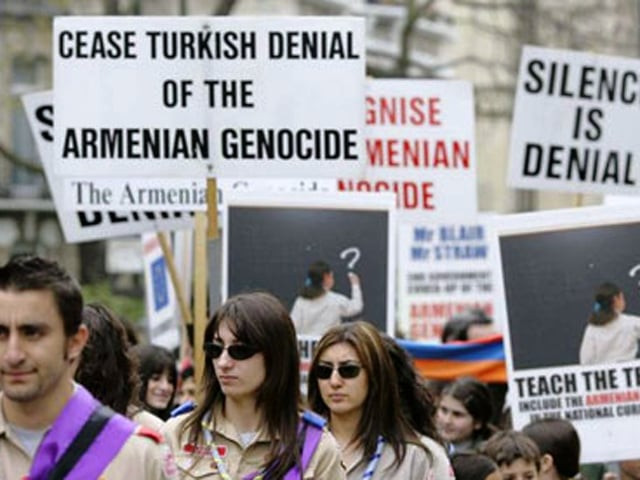According to the Independent, supporters of the resolution had high hopes for it to be passed before the term ended because the outgoing speaker, Nancy Pelosi, had previously supported the resolution.
Turkey is an important ally of the US in the Middle East playing a supporting role in the Iraq War and has helped the US in the past on other war fronts. Turkish governments have always denied the death of 1.5 million Armenian Christians as genocide, blaming it on general anarchy and civil was at that time. However, historians term it as the first holocaust of the 20th century, of which documentary and photographic proof also exists.
Genocide roots in the Ottoman Empire
Within the Ottoman Empire, the Armenians were generally concentrated in the eastern provinces. According to the Dhimmi system in the Ottoman Empire the non-Muslims were subjected to over-taxation and limited legal freedoms. Generally referred to as infidels or unbelievers, they were not considered equal to Muslims. Testimony of a non-Muslim against a Muslim was not admissible in court and their houses could not be higher than their Muslim neighbor’s.
Initial massacres took place under the rule of Sultan Abdul Hamid II in the late 19th century. These were called the Hamidiyan massacres in which, according to different historians, 80,000 to 300,000 Armenians were killed.
In 1908, the monarchy had collapsed after the Young Turk Revolution and by 1913 the Committee of Union and Progress (CUP), Ittihad ve Terakki Jemiyeti, emerged at the head of the government in a coup. The CUP had an extreme Turkish nationalistic ideology and was mainly controlled by Enver Pasha, Minister of War, Talat Pasha, Minister of the Interior and Grand Vizier in 1917, and Jemal Pasha, Minister of the Marine.
The resettlement program
I will not go deep into political background of the genocide which occurred during World War I but one of the basic reasons behind it was Ottoman insecurity that the Armenian Christian subjects will support the Russians pushing on in the eastern front of the war. Some historians also credit it to the policies of the government to create a unified and pure “Turkish state.”
In the spring and summer of 1915 Armenians all around the empire were ordered to deport under a fictitious “resettlement program.” Convoys consisting of hundreds of thousands of Armenians from different parts of the empire started towards the Syrian Desert. These convoys were basically death marches because most of the people were subjected to torture, rape and slaughter during their painful journey towards the desert. The government did not make any plans for the provision of food and water and thousands died of starvation and disease. Some evidence of a primitive form of gas chambers also exists, where women and children were put into a cave and the entrance of the cave was set on fire, suffocating the people inside the cave.
The forgotten holocaust
A new “Special Organisation” called the Teshkilâti Mahsusa, was formed as a tool for extermination. Approximated two million Armenians lived in the Ottoman lands in 1915 but by 1918 an estimated 1 million had perished and by 1923 a negligible number of Armenians were left in main Anatolian Turkey.
Photographic and documentary evidence exist of the extermination of the Armenian race from the Ottoman lands.
This Genocide the forgotten holocaust because it was over-shadowed by the killing of the six million Jews during the World War II by Nazi Germany and generally people really don’t know about it. It is ironic because while persuading his associates that a Jewish holocaust would be tolerated by the west, Adolf Hitler said the following and he was right:
Who, after all, speaks today of the annihilation of the Armenians?
Events of such magnitude cannot be explained in one article so for readers who are further interested in knowing about what took place in the Ottoman Empire during that time, should have a look at the following:
- Great War for Civilization: The conquest of the Middle East – By Robert Fisk (Chapter 10)
- Subjects of the Sultan: Culture and Daily Life in the Ottoman Empire – by Suraiya Faroqhi
- The Knock at the Door: A Journey through the Darkness of the Armenian Genocide – by Margaret Ajemian Ahnert
- A Shameful Act: The Armenian Genocide and the Question of Turkish Responsibility – by Taner Akçam
- Survivors: An Oral History Of The Armenian Genocide – by Donald E. Miller and Lorna Touryan Miller



COMMENTS
Comments are moderated and generally will be posted if they are on-topic and not abusive.
For more information, please see our Comments FAQ